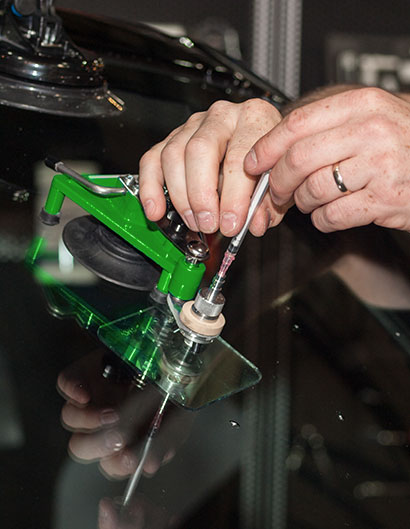When a rock hits your windshield or a crack appears overnight, it can be hard to tell what kind of damage you’re dealing with. Knowing the type of crack or chip is the first step toward fixing it properly and avoiding more costly repairs later on. This guide will walk you through the most common forms of windshield damage so you can make informed decisions about windshield repair or replacement.
What Is a Chip? What Is a Crack?
A chip is a small area where a stone or debris has struck the glass, leaving a localized spot of damage. Chips often look like little pits or divots and may have a tiny crack radiating out. In contrast, a crack is a distinct line that can stretch across the windshield and grow over time. Identifying whether you have a chip or a crack makes a big difference in determining if your windshield can be repaired.

Common Types of Chips and Cracks
Windshield damage isn’t all the same. Here are some of the most frequent types you might see:
- Bullseye: A circular area of damage with a cone in the outer layer of glass.
- Star Break: Short cracks radiate out from the impact point, resembling a star.
- Combination Break: A mix of bullseye and star break characteristics.
- Edge Crack: Starts within 2 inches of the edge and can extend horizontally.
- Floater Crack: Occurs away from the edges, typically in the center area.
- Stress Crack: Develops without impact, often from sudden temperature changes.
According to the National Highway Traffic Safety Administration (NHTSA), defects or impacts affecting glazing materials can weaken your windshield’s safety performance. That’s why each type of damage has its own repair considerations. For example, small bullseyes and star breaks can usually be fixed if caught early. Edge cracks and long stress cracks often require a full windshield replacement.
Why Identification Matters
Identifying the specific type of damage helps professionals decide if a repair is possible. For instance, if a crack extends more than 6 inches, it may compromise the structural integrity of the windshield. Damage close to the edge also weakens the bond to the vehicle frame, which is why prompt evaluation is so important. You can learn more about structural issues and defect investigations on Transport Canada’s defect investigations page.
How These Forms of Damage Spread Over Time
Even a small chip can turn into a large crack under the right conditions. Temperature swings, vibrations from driving, moisture seeping into the damaged area, and everyday stress on the glass can all contribute to rapid spreading. That’s why waiting weeks to address a small flaw can lead to an unrepairable crack.
What You Should Do Next
If you spot any damage on your windshield, take these steps right away:- Inspect the area to see how big and deep the damage is.
- Avoid washing the windshield with very hot water or using the defroster on high.
- Don’t slam the doors, as this vibration can make cracks worse.
- Call a professional for an assessment before the damage spreads.
If you’re not sure whether you need a repair or replacement, our windshield repair specialists and replacement technicians can guide you through the process.
When Replacement Becomes Necessary
Generally, replacement is recommended when:- The crack is longer than a credit card.
- There are multiple chips or cracks in the same area.
- The damage is in the driver’s direct line of sight.
- An edge crack threatens the windshield’s seal.
A professional technician can evaluate your glass and recommend whether a repair or full replacement is the safest option.
Contact Speers Auto Glass today to have your windshield damage professionally assessed and repaired before it spreads further.
Related Posts in This Series
- How Fast Can a Crack Spread in Your Windshield?
- The Dangers of Ignoring Auto Glass Damage
- Stone Chip vs Crack: How to Tell the Difference
